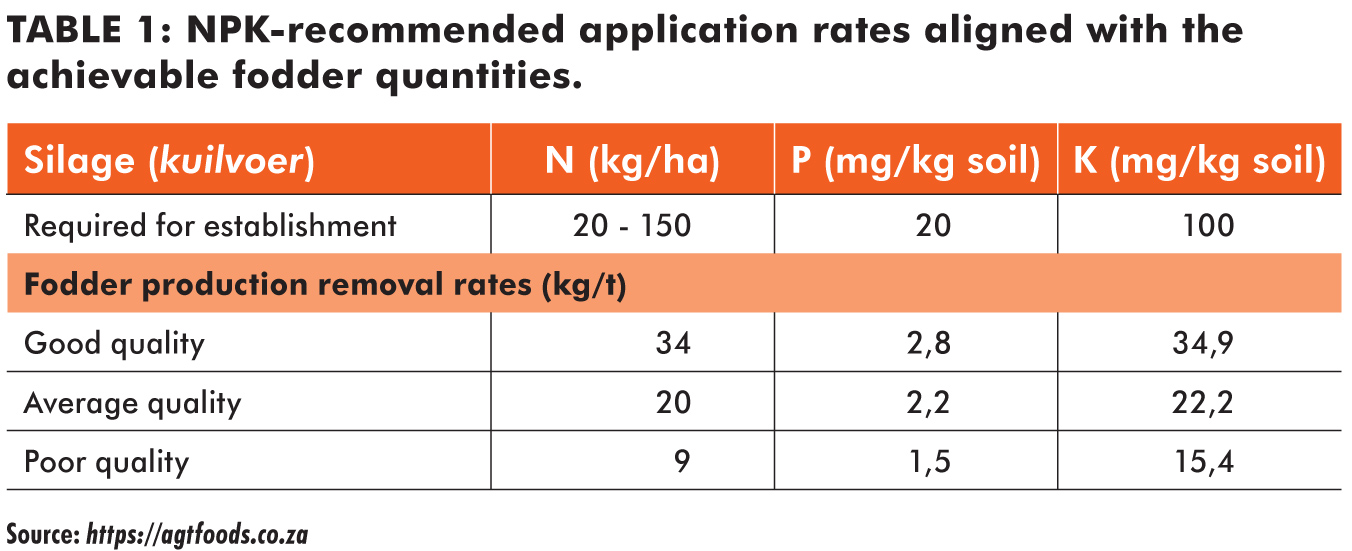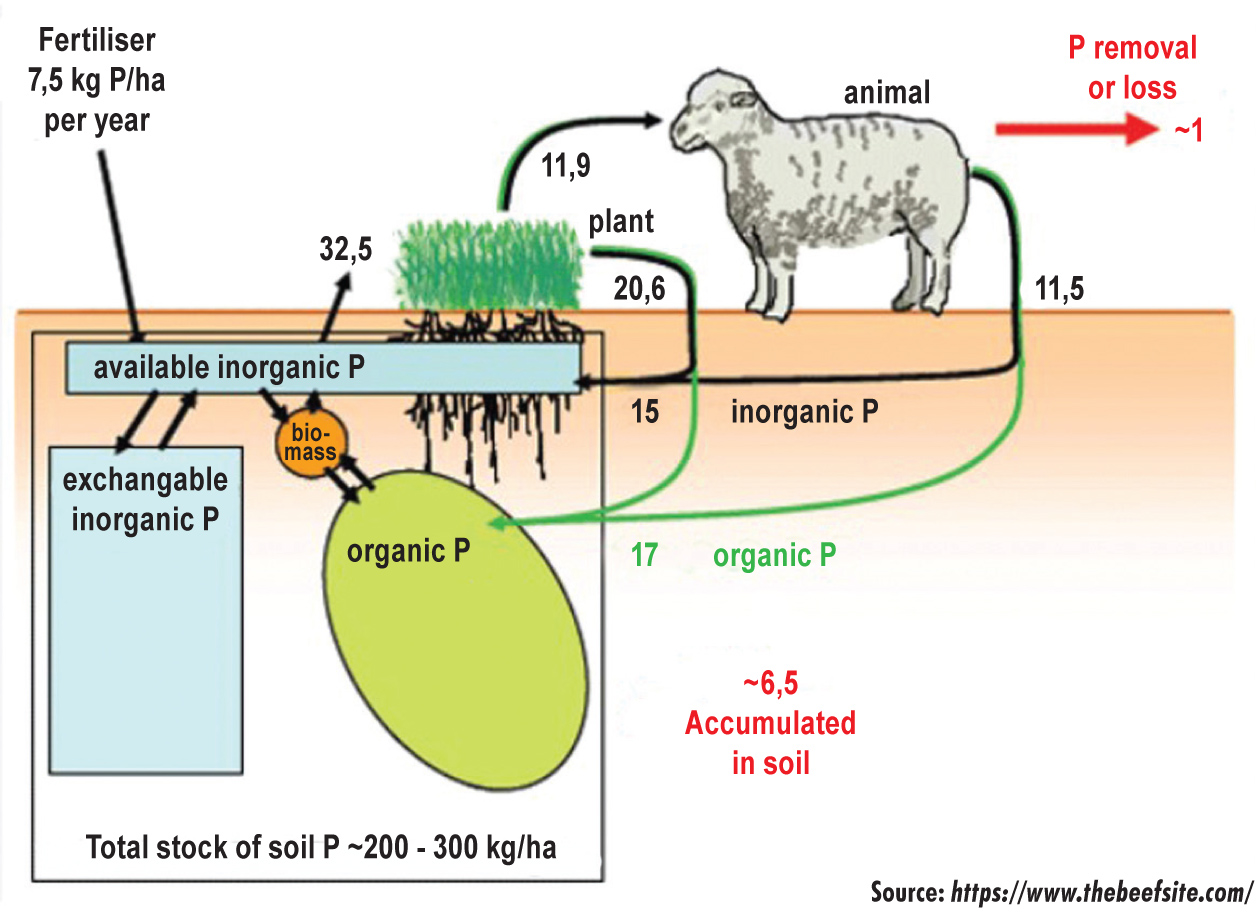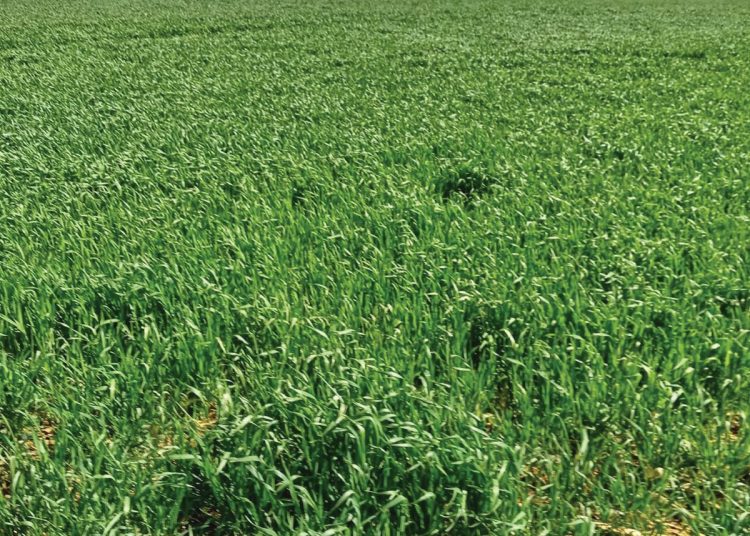
Black oats (Avena strigosa Schreb.) is among the oldest cover crops in the world, planted specifically for its high biomass production, both above and below the ground. Black oats and vetch interplanting yield some of the highest amounts of biomass that can be utilised as feedstock, mulch or green manure.
Optimal planting of black oats occurs in April or May, exhibiting superior disease resistance and an extended growth season. Black oats can grow to a height of 0,8 m to 1,5 m, depending on the growing conditions. It is an annual grass from temperate areas and is used mainly for forage, thanks to its good nutritive value and productivity as a soil-improving crop or green manure.
It is quick to establish and is a grazable species in terms of livestock forage. Black oats is a fast-growing forage that can be grazed six weeks after sowing (Gold Steinberg et al., 2005).
Required environmental conditions for production
Under arid conditions, a minimum of 400 mm of annual precipitation will be required in winter rainfall regions, or 500 mm in summer rainfall regions, due to its ability to withstand droughts.
Because of its high acid tolerance, it can thrive in soils with a pH(KCl) of greater than 4,5. It is tolerant of saline soils. However, a pH(KCl) greater than 5 but less than 7,3 is preferable (Dannhauser, 1991).
According to Dial (2014), it has faster growth and a shorter production cycle than ryegrass. It also has a high dry matter (DM) productivity and a high nutritional value, with a relatively good protein content. Despite its cold tolerance, it cannot endure temperatures below -8°C.
Black oats can survive on moderately infertile soils that are well-drained (sandy or loamy soils, high clay content or even soils with a poor nutrient value) (Fontaneli et al., 2012). Some cultivars are highly resistant to a high soluble aluminium (Al) content in the soil. Black oats requires direct sunlight and can thrive in conjunction with forage legumes in intercropping systems. It is highly resistant to rust (Puccinia graminis) (Gold Steinberg et al., 2005).
Black oats can be sown from early spring to early autumn at a seeding rate of 50 kg/ha to 75 kg/ha. A well-prepared seedbed with good tilth will produce significant crop development and production when tilled at a depth of 5 cm with a light cultivator or a disc. To improve seed-soil contact and seed germination, seeds can be disseminated in the field or drilled into the soil at a depth of 2 cm to 3 cm before being rolled.
A prolonged frost or cold wave throughout the winter may destroy the plant because many of them are not winter-hardy. Before incorporation, the crop may be flailed or grazed by livestock.
There are concerns that these species may become a weed in cereal rotations if allowed to seed regularly. Table 1 indicates the soil NPK requirements for the production of black oats, with a minimum of 40 kg to 150 kg nitrogen to be added during or after planting. The black oats biomass will increase with the amount of nitrogen applied. The crop has an average NPK removal rate of 34:3:35 respectively, to achieve at least one tonnage per hectare of good-quality fodder.
 Feeding black oats to livestock
Feeding black oats to livestock
Black oats can be grazed, cut, diced and stall-fed (fresh). Moderate grazing is recommended to promote fodder production and animal performance. High-producing animals can graze black oats rotationally for a short period (one to three days), after which they are removed from the sward for 30 days before returning.
Under such a system, black oats should not be grazed or cut below 7 cm tall. Under continuous grazing, the stocking rate should be adjusted to match the plant growth, with the stubble ranging from 20 cm to 40 cm (Fontaneli et al., 2012).
Black oats can be harvested at the vegetative stage and dried to provide hay or silage before wilting. It has a strong buffering capacity, which minimises pH drops when stored for silage.
The use of bacteria, such as Lactobacillus acidophilus and/or enzymes, may improve the silage quality. Lactic acid bacteria inoculants are commonly used to ensure silage quality by increasing the process of fermentation and aerobic stability of silage (Guo et al., 2021).
Impact on agricultural soils
AS COVER CROP
Black oats serves as a beneficial winter cover crop in regions free of frost. It easily grows in clusters (tillers), which provides adequate soil coverage with a good C:N ratio that is favourable for soil N management, because of its high organic N-producing ability (Schomberg et al., 2005).
When planted as a winter cover crop in crop rotation, it can increase the soybean yield up to 38% (Junior et al., 2020). It enhances soil by reducing nitrate leaching through scavenging nitrogen, and the extensive root system protects the soil from erosion, while minimising crusting.
It enhances the water penetration rate, stabilises soil aggregates, generates organic matter and immobilises certain heavy metals from the soil, thus improving the soil structure. Phosphorus (P) and Potassium (K) can be recycled back to the soil by grazing animals. This is dependent on the grazing system and the type of animals used.
Up to 40% of P and 90% of K can be recycled. An example of nutrient recycling is illustrated by Figure 1, where phosphorus is removed from the soil by grazing animals and is later returned. A significant portion of these nutrients, ingested through forage, is excreted in manure and urine and returned to the soil.

ON WEED CONTROL
Black oats inhibits the proliferation of broadleaf weeds. It has been reported as having some allelopathic properties, which inhibit the growth of annual grasses and small-seeded broadleaf weeds such as pigweed (Amaranth species). Root exudates can prevent the germination of other adjacent species. This is referred to as allelopathy.
While this could be effective for preventing weed seedlings, it may limit the germination of the next crop, especially if it is a small-seeded crop. To reduce this effect, consider a delay of six weeks before sowing the next crop (Liu et al., 2024).
ON NEMATODE CONTROL
According to reports, black oats has nematocidal properties. Black oats has been demonstrated to either prevent or be resistant to root-knot nematodes when used as a cover crop. The utilisation of crops like oats, which facilitates biomass production and exhibit an antagonistic effect on nematodes by preventing the hatching of second-stage juveniles (J2), may serve as an alternate method for controlling these infestations (Carraro-Lemes et al., 2021).
Summary
Black oats, specifically Saia oats, is a good cover crop to use in rotation because of its benefits and advantages to the soil. Its biomass production provides organic matter to the soil and increases water infiltration.
It also significantly reduces run-off and erosion. It establishes itself rapidly and may thrive on diverse soil types in regions with both winter and summer precipitation. It is suitable for the management of soil NPK due to its ability to decrease the leaching of nitrogen. Under a controlled grazing system, both P and K will be recycled back to the soil by grazing livestock.
References
- Dannhauser CS, 1991. Die bestuur van aangeplante weiding in die somerreënval-dele, vol. 1
- Dial HL, 2014. Plant guide for black oats (Avena strigosa Schreb.). USDA-Natural Resources Conservation Service, Tucson Plant Materials Center, Tucson
- Fontaneli RS, Santos HP dos, Fontaneli RS, Oliveira JTRI, Dreon G, 2012. Winter forage grasses. In: Fontaneli RS, Santos HP dos, Fontaneli RS (Eds), Forrageiras para integração lavoura-pecuária-floresta na região sul-brasileira, EMBRAPA, Brasilia
- Gold Steinberg J, Mitchell Fetch J and Fetch TG Jr, 2005. Evaluation of Avena spp. accessions for resistance to oat stem rust. Plant Disease, 89 (5): 521-525
- Guo L, Wang X, Lin Y, Yang X, Ni K and Yang F, (2021). Microorganisms that are critical for the fermentation quality of paper mulberry silage. Food and Energy Security, 10, e304
- https://agtfoods.co.za/wp-content/uploads/2018/07/21.-Oats.pdf.
- Junior BAA, Santos JCF dos, Debiasi H, Coelho AE, Sapucay MJL da c, Bratti F and Locatelli JL, 2020. Performance of soybean grown in succession to black oats and wheat. Brazilian Agricultural Research, v.55
- Liu J, Xia R, Zhao W, Fang K, Kou Y and Liu Q, 2024. Effects of plant root exudates at different successional stages on the seed germination and seedling growth of subalpine dominant tree species. Geoderma, 443
- Schomberg HH, Endale DM, Calegari A, Peixoto R, Miyazawa M and Cabrera ML, 2005. Influence of cover crops on potential nitrogen availability to succeeding crops in a Southern Piedmont soil. Biology and Fertility of Soils, 42: 299-307
- Tawaha AM and MA, 2003. Turk allelopathic effects of black mustard (Brassica nigra) on germination and growth of wild barley (Hordeum spontaneum). Journal of Agronomy and Crop Science 189, 298-303
- Truter WF, Dannhauser CS, Smith H and Trytsman G, 2014. Avena sativa (oats). Integrated crop and pasture-based livestock production systems. Conservation Agriculture – Part 12. SA Grain. Page 36-38








